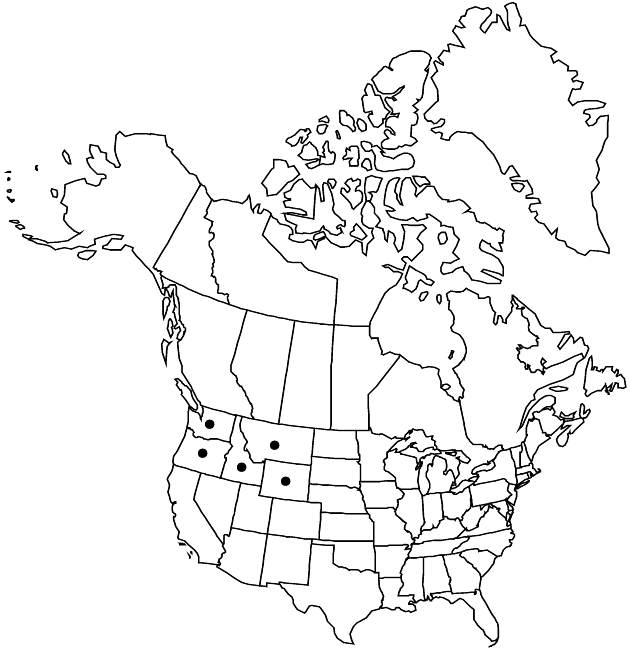Difference between revisions of "Balsamorhiza incana"
Trans. Amer. Philos. Soc., n. s. 7: 350. 1840.
Endemic
FNA>Volume Importer |
imported>Volume Importer |
||
| (6 intermediate revisions by 2 users not shown) | |||
| Line 6: | Line 6: | ||
|place=7: 350. 1840 | |place=7: 350. 1840 | ||
|year=1840 | |year=1840 | ||
| + | }} | ||
| + | |special_status={{Treatment/ID/Special_status | ||
| + | |code=E | ||
| + | |label=Endemic | ||
}} | }} | ||
|basionyms= | |basionyms= | ||
| Line 23: | Line 27: | ||
|elevation=1200–2800 m | |elevation=1200–2800 m | ||
|distribution=Idaho;Mont.;Oreg.;Wash.;Wyo. | |distribution=Idaho;Mont.;Oreg.;Wash.;Wyo. | ||
| − | |discussion=<p>Balsamorhiza incana hybridizes with B. sagittata.</p> | + | |discussion=<p><i>Balsamorhiza incana</i> hybridizes with <i>B. sagittata</i>.</p> |
|tables= | |tables= | ||
|references= | |references= | ||
| Line 32: | Line 36: | ||
-->{{#Taxon: | -->{{#Taxon: | ||
name=Balsamorhiza incana | name=Balsamorhiza incana | ||
| − | |||
|authority=Nuttall | |authority=Nuttall | ||
|rank=species | |rank=species | ||
| Line 46: | Line 49: | ||
|publication title=Trans. Amer. Philos. Soc., n. s. | |publication title=Trans. Amer. Philos. Soc., n. s. | ||
|publication year=1840 | |publication year=1840 | ||
| − | |special status= | + | |special status=Endemic |
| − | |source xml=https:// | + | |source xml=https://bitbucket.org/aafc-mbb/fna-data-curation/src/2e0870ddd59836b60bcf96646a41e87ea5a5943a/coarse_grained_fna_xml/V19-20-21/V21_226.xml |
|tribe=Asteraceae tribe Heliantheae | |tribe=Asteraceae tribe Heliantheae | ||
|subtribe=Asteraceae (tribe Heliantheae) subtribe Ecliptinae | |subtribe=Asteraceae (tribe Heliantheae) subtribe Ecliptinae | ||
Latest revision as of 20:10, 5 November 2020
Plants 20–35(–70) cm. Basal leaves: blades white to grayish, lance-ovate to oblong, 10–45 × 3–7(–10) cm (1-pinnatifid, lobes ovate to lanceolate, 20–50 × 5–25 mm), bases broadly cuneate to truncate, margins entire or serrate (plane, not distinctly ciliate), apices obtuse, faces usually densely, sometimes sparsely, tomentose. Heads usually borne singly. Involucres hemispheric, 20–25(–30) mm. Outer phyllaries ovate to lanceolate or linear, 15–20 mm, shorter than inner, apices acute to attenuate (margins ± ciliate). Ray laminae 20–40(–50+) mm. 2n = 38.
Phenology: Flowering May–Jun(–Jul).
Habitat: Grassy meadows, dry, rocky sites, openings in conifer forests
Elevation: 1200–2800 m
Distribution

Idaho, Mont., Oreg., Wash., Wyo.
Discussion
Balsamorhiza incana hybridizes with B. sagittata.
Selected References
None.
Lower Taxa
None.